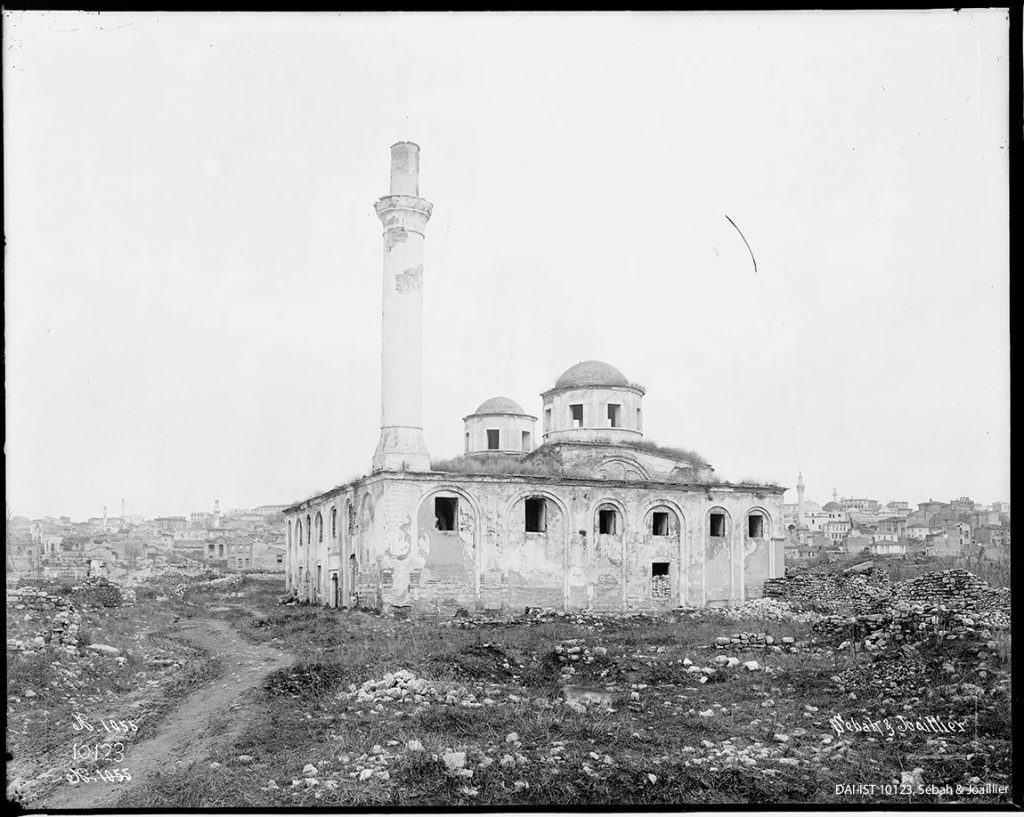The photo of the month from our photo library has the motto ›Constantinople – Byzantium – Istanbul through the ages‹. The Monastery ›τοῦ Λιβός‹, as the seat of a nunnery, was one of the largest of its kind in the capital. It was built by the Byzantine admiral Constantine Lips, who gave the building its name, and immortalized in a circumferential inscription on the cornice of the so-called North Church, dating it to 907 A.D. This building is an important representative in the development of the cross-in-square church design that was soon used as a standard church type all over the Byzantine Empire. The so-called Southern Church, dedicated to St. John the Baptist, was built at the end of the 13th century by the empress Theodora Palaiologina. The change of time as well as the change of style from two different eras – the Middle Byzantine versus Late Byzantine period – can today be well seen in the east façade of both churches, unfortunately hidden under a thick layer of plaster for a long time, as the photo also shows. The stylistic pluralism, typical of Palaiological architecture, permeates the masonry with different brick decorations and is clearly distinguished from its northern Macedonian predecessor. Only 40 years after the Ottomans conquered the Byzantine capital, the complex was converted into a mosque, of which today the minaret, which has been renewed again and again over the centuries, crowning the exterior is visible from afar. The photograph captures the condition around 1900 by the famous Ottoman photographers Sébah & Joaillier before excavation and restoration works took place in 1929 and during the 1970s and 80s. Today, about 100 years later, Molla Fenari İsa Camii is on the one hand a good example of the transformation process of Byzantine Constantinople into Ottoman Istanbul, on the other hand it shows the rapid change of the ceaselessly growing city on the Bosphorus. As the many cars speed past on Adnan Menderes Bulvarı/Vatan Caddesi, which directly adjoins the complex in our days, one longs for the rural scenery of the past, far away from the hecticness of the large town.
The Author of the month is Martina Koch. She is a Byzantine archaeologist and works in the editorial office of the DAI Istanbul Department.
Photograph: D-DAI-IST-10123 Sebah & Joaillier (Year unknown)

